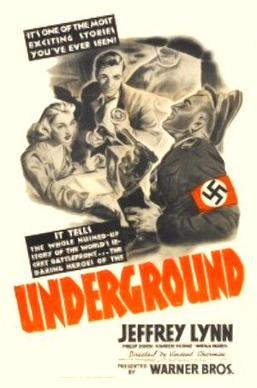
Underground is a 1941 American war thriller film directed by Vincent Sherman and starring Jeffrey Lynn, Philip Dorn and Kaaren Verne. Focusing on the German Nazi Resistance opposing the Nazis in World War II, Lynn and Dorn play two brothers initially on opposite sides. It was produced and distributed by Warner Brothers.

The Blue and White Lion is a 1952 West German comedy film directed by Werner Jacobs and Olf Fischer and starring Wastl Witt, Elise Aulinger and Lore Frisch. It is based on several stories by Ludwig Thoma. It was shot at the Bavaria Studios in Munich. The film's sets were designed by Franz Bi and Bruno Monden.
Elfriede Datzig was an Austrian film actress. Following the Anschluss, Datzig appeared in a number of films made by Wien-Film such as the 1939 comedy Anton the Last. She married the actor Albert Hehn. After the war, she formed a band and sang with Mady Rahl for the USO. In 1946, she died at the age of 23 due to an allergic reaction to penicillin.

The Mayor of Zalamea is a 1920 German silent drama film directed by Ludwig Berger and starring Lil Dagover, Albert Steinrück and Agnes Straub. The film was based on Pedro Calderón de la Barca's historic Spanish play of the same name. It was shot at the Babelsberg Studios in Berlin with sets designed by the art director Hermann Warm. It was Berger's debut as a director.
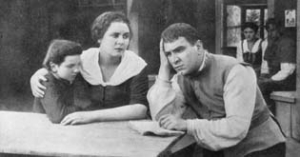
The War of the Oxen is a 1920 German silent historical film directed by Franz Osten. It was made by Bavaria Film at the company's Munich studios. It is based on the 1914 novel The War of the Oxen by Ludwig Ganghofer.

Silence in the Forest is a 1937 German drama film directed by Hans Deppe and starring Hansi Knoteck, Paul Richter and Gustl Gstettenbaur.
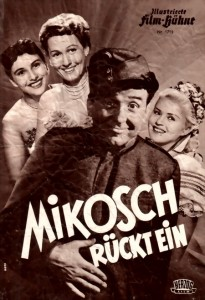
Mikosch Comes In is a 1952 West German comedy film directed by Johann Alexander Hübler-Kahla and starring Georg Thomalla, Willy Fritsch and Paul Hörbiger. It was shot at the Tempelhof Studios in West Berlin. The film's sets were designed by the art directors Willi A. Herrmann and Heinrich Weidemann.
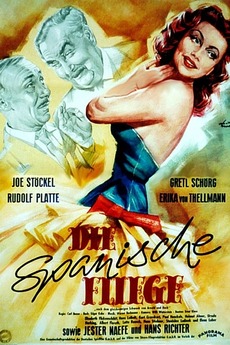
The Spanish Fly is a 1955 West German comedy film directed by Carl Boese and starring Joe Stöckel, Erika von Thellmann and Rudolf Platte. It was shot at the Göttingen Studios with sets designed by the art director Ernst Klose. It was based on the 1913 play The Spanish Fly by Franz Arnold and Ernst Bach. A previous adaptation had been released in 1931.

Tell the Truth is a 1946 German comedy film directed by Helmut Weiss and starring Gustav Fröhlich, Mady Rahl, and Ingeborg von Kusserow. The film had a troubled production, and was originally filming in the final days of the Nazi era with Heinz Rühmann and his wife Hertha Feiler in the lead roles. Production was halted when Soviet forces took control of the Tempelhof Studios during the Battle of Berlin. The film was then remade in the British sector of Berlin with different leads but using substantial amounts of footage already shot during the previous production.

Marriage Strike is a 1953 West German comedy film directed by Joe Stöckel and starring Erich Auer, Lore Frisch and Wastl Witt. It is a remake of the 1935 film of the same title directed by Georg Jacoby. It was shot at the Bavaria Studios in Munich and on location in Upper Bavaria. The film's sets were designed by the art director Carl Ludwig Kirmse.
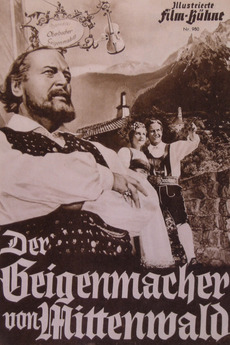
The Violin Maker of Mittenwald is a 1950 West German drama film directed by Rudolf Schündler and starring Willy Rösner, Paul Richter and Franziska Kinz.

The Cloister of Martins is a 1951 West German drama film directed by Richard Häussler and starring Willy Rösner, Gisela Fackeldey and Heinz Engelmann. Based on the novel of the same title by Ludwig Ganghofer, it was part of the postwar wave of heimatfilm movies in Germany. It was shot at the Bavaria Studios in Munich and on location around Königssee and Karwendel in the Alps. The film's sets were designed by the art directors Willi Horn and Carl Ludwig Kirmse.

Hotel Sacher is a 1939 German drama film directed by Erich Engel and starring Sybille Schmitz, Willy Birgel, and Wolf Albach-Retty.

Tonelli is a 1943 German drama film directed by Victor Tourjansky and starring Ferdinand Marian, Winnie Markus and Mady Rahl. It was shot at the Bavaria Studios in Munich and at the Deutsches Theater in the city. The film's sets were designed by the art director Ludwig Reiber. It is a circus film, a popular genre in Germany during the war years.
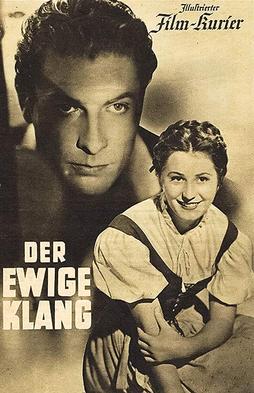
The Eternal Tone is a 1943 German drama film directed by Günther Rittau and starring Elfriede Datzig, Rudolf Prack and Olga Chekhova.

The White Dream is a 1943 musical comedy film directed by Géza von Cziffra and starring Olly Holzmann, Elfriede Datzig and Wolf Albach-Retty. The film was made by Wien-Film, a Vienna-based company set up after Austria had been incorporated into Greater Germany following the 1938 Anschluss.















